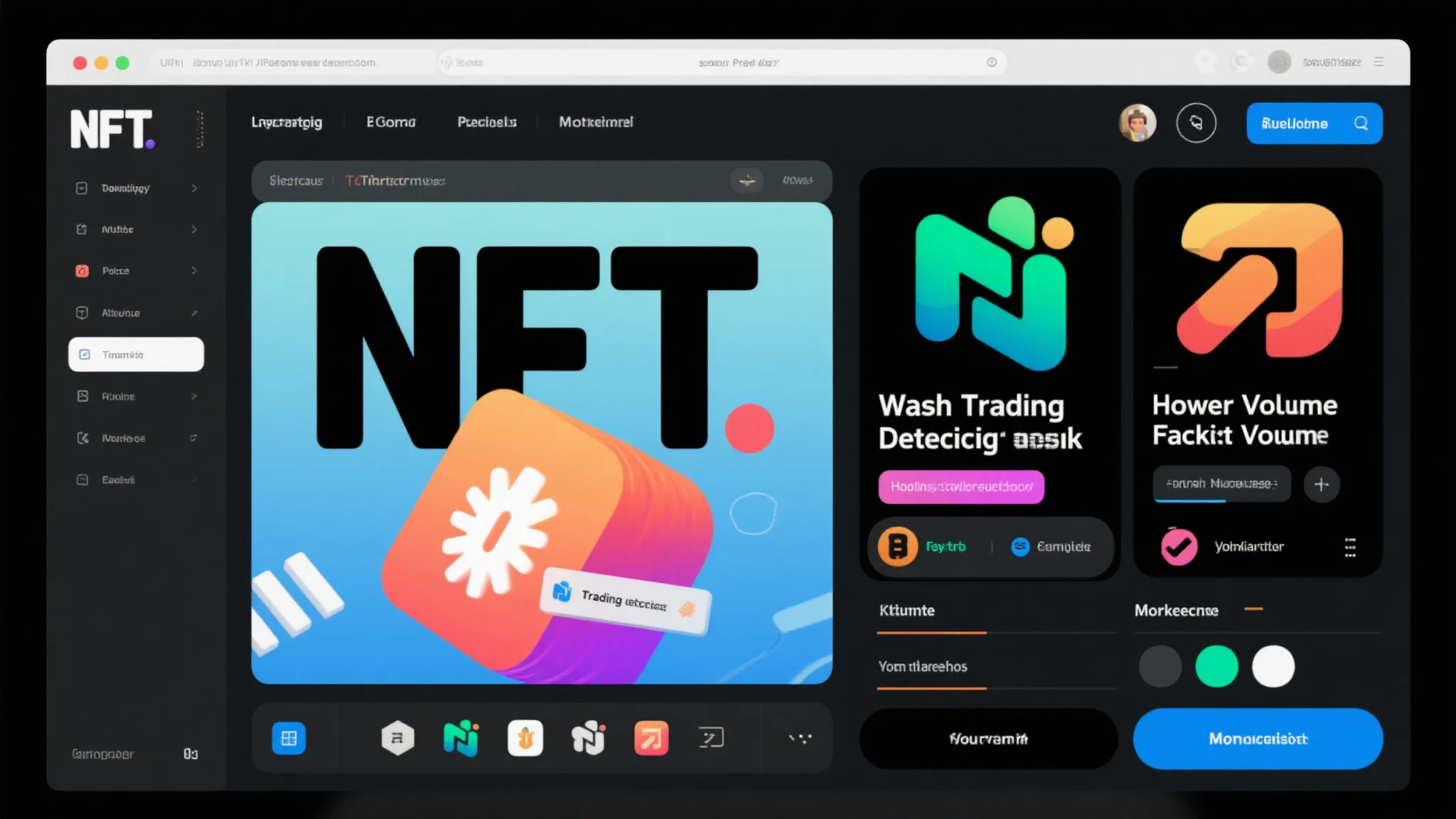NFT Wash Trading Detection: How to Prevent Fake Volume on Your Marketplace
NFT Wash Trading Detection: How to Prevent Fake Volume on Your Marketplace
The NFT market has exploded in recent years, but with this growth comes a dark side – NFT wash trading detection has become crucial for maintaining marketplace integrity. Wash trading occurs when traders artificially inflate trading volumes by buying and selling assets to themselves, creating false market activity. This deceptive practice distorts price discovery, misleads investors, and can even trigger regulatory scrutiny. As marketplace operators, implementing robust detection mechanisms isn’t just good practice – it’s essential for long-term viability. The complexity of detecting wash trades has grown exponentially as traders employ increasingly sophisticated methods to evade detection, including using multiple wallets, timing trades to appear organic, and coordinating with other traders to create the illusion of genuine market activity. These tactics make it challenging for traditional monitoring systems to distinguish between legitimate trading and artificial volume inflation.
Modern blockchain analytics tools have evolved to identify these patterns with remarkable accuracy. By analyzing transaction graphs, wallet relationships, and timing patterns, sophisticated algorithms can flag suspicious activity with high confidence. The most effective systems combine on-chain analysis with off-chain behavioral signals, creating multi-layered detection that adapts as wash traders evolve their tactics. What makes these systems particularly valuable is their ability to learn – each detected case improves the model’s ability to catch future attempts. Advanced machine learning models can now detect subtle patterns that human analysts might miss, such as recurring transaction sequences, unusual wallet funding patterns, and suspicious timing between trades. These systems can process millions of transactions in real-time, providing marketplace operators with immediate alerts when suspicious activity is detected.
Implementing comprehensive crypto anti-fraud solutions requires balancing detection with user experience. Overly aggressive filters might catch legitimate traders in false positives, while lax systems allow manipulation to flourish. The most successful marketplaces employ graduated responses – from initial warnings to temporary trading restrictions and ultimately account termination for repeat offenders. Transparency about these policies actually builds trust, as legitimate traders appreciate knowing the platform actively combats manipulation. This approach also supports broader digital asset compliance efforts, demonstrating proactive measures to regulators and institutional participants. Many platforms now publish regular transparency reports detailing their enforcement actions against wash trading, which helps establish credibility with both users and regulators. Some have even implemented bounty programs that reward community members for identifying suspicious trading patterns, creating a crowdsourced approach to detection that complements automated systems.
The financial impact of wash trading extends beyond simple market manipulation. When left unchecked, artificial volume inflation can create false perceptions of liquidity, leading to mispriced assets and distorted market signals. This undermines the fundamental value proposition of NFT marketplaces as transparent trading venues. Sophisticated wash traders often target newly listed collections or assets with low trading volume, where their activities can have outsized impact on perceived market trends. Some even use wash trading to manipulate ranking algorithms that prioritize high-volume collections, effectively gaming the system to gain visibility for their preferred assets. The ripple effects of these practices can discourage legitimate collectors and investors, who may become wary of participating in markets where artificial activity distorts true supply and demand dynamics.
Regulatory scrutiny of NFT marketplaces has intensified as wash trading practices have become more prevalent. Several jurisdictions have begun treating certain NFT transactions as securities transactions, bringing them under existing market manipulation regulations. This regulatory attention makes robust NFT wash trading detection systems not just a competitive advantage but potentially a legal requirement. Forward-thinking platforms are now collaborating to share information about known bad actors and developing industry-wide standards for detecting and preventing market manipulation. Some have formed self-regulatory organizations to establish best practices and coordinate enforcement efforts across multiple trading venues. These collaborative approaches help create a more level playing field while reducing the burden on individual platforms to develop detection systems from scratch.

The technological arms race between wash traders and detection systems continues to escalate. As detection methods improve, manipulators develop new techniques to evade scrutiny. Some now use decentralized mixing services to obscure transaction trails, while others employ complex smart contract interactions to make wash trades appear legitimate. Cutting-edge blockchain analytics tools are responding with advanced clustering algorithms that can identify related wallets even when they attempt to hide their connections. Some systems now incorporate predictive modeling to anticipate likely wash trading patterns before they fully manifest, allowing for preemptive intervention. The most sophisticated platforms are experimenting with zero-knowledge proof techniques that can verify the legitimacy of trading activity without compromising user privacy, potentially offering the best of both worlds – robust fraud detection while preserving pseudonymity.
Building trust in NFT marketplaces requires ongoing investment in crypto anti-fraud solutions. While no system can catch every instance of wash trading, demonstrating a serious commitment to detection and prevention can significantly enhance a platform’s reputation. Many successful marketplaces now highlight their anti-manipulation features as key differentiators, appealing to serious collectors and institutional participants who value market integrity. Some have implemented transparent rating systems that allow users to evaluate the likelihood of wash trading in specific collections, empowering participants to make more informed trading decisions. Others provide educational resources helping users recognize signs of potential manipulation, creating a more informed and vigilant community that serves as an additional layer of defense against market abuse.
The future of digital asset compliance will likely see increasing convergence between traditional financial market surveillance techniques and blockchain-specific approaches. Regulatory expectations are evolving rapidly, with many jurisdictions moving toward requirements similar to those governing securities exchanges. Forward-looking platforms are preparing for this future by building compliance teams with expertise in both traditional market regulation and blockchain technology. Some are developing hybrid systems that combine the transparency of blockchain analytics with the proven effectiveness of traditional surveillance methods used in stock markets. This blended approach may offer the most comprehensive protection against increasingly sophisticated forms of market manipulation while satisfying regulatory requirements across multiple jurisdictions.
